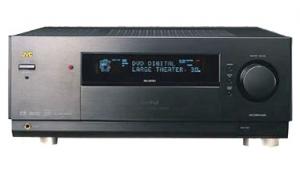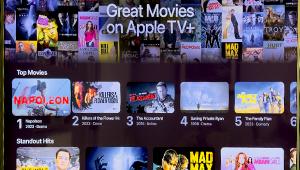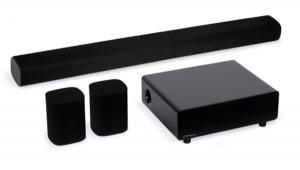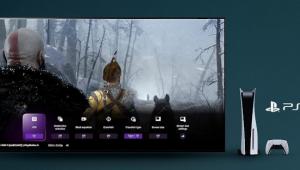HT Guide to AV Receivers

What exactly is an A/V receiver? An A/V receiver performs the functions of a multichannel power amplifier and surround processor in one box. For the most demanding speakers and rooms, it may be better to buy these things as separate products. But for most home theater systems, an A/V receiver is the ideal powerhouse.
What’s new in AVRs this year? The biggest event is the advent of a new generation of HDMI technology. The latest version to be widely used is HDMI 1.4. Its new features include the HDMI Ethernet Channel, which lets connected devices share data and Internet connections; the Audio Return Channel, which lets the display pass audio signals back to the A/V receiver; and the new Micro HDMI Connector. Other HDMI 1.4 features—which are formally part of the spec but not yet built into products due to the availability of chipsets—include 4k-by-2k resolution. But the splashiest feature of HDMI 1.4 is its 3D support. There’s also a nascent HDMI 1.4a, which offers additional compatibility for 3D broadcast formats that were adopted very recently.
Things that were new over the last few years—like HDMI 1.3 connectivity, lossless surround decoding, and iPod docking options—are now deployed across most brands and models. And networking features, which were relatively rare last year, are burgeoning in tandem with similar efforts by flat-panel HDTV makers.
Energy-Efficient
Amplifier Topologies
A conventional AVR uses Class AB amplification, which can perform well but wastes some energy in the form of heat. More efficient alternatives are now arriving. One of the most promising is Class D. This turns the analog input signal into a train of pulses and uses that to switch the output devices on and off, rather than let them run all the time. Class G and Class H amps aren’t new, but they’re gaining in popularity. These use various schemes, like rail switching and rail tracking, that let them operate their output devices with no more voltage than necessary at any given time. Manufacturers are finding ways to make these power-saving designs sound better, and we expect them to eventually take over most of the market. If you want to shave your power bill—or save the planet—these new topologies are worth considering.
Beyond 5.1
Our position on surround sound is that
it’s a 5.1-channel medium at heart: three channels in front, two toward the rear of the side walls, and a dedicated low-frequency-effects channel. However, except for entry-level models, most AVRs have seven amp channels. That includes a basic array of 5.1 channels and another two channels for surround expansion modes. The latter include front height, front width, and back-surround channels. Although Yamaha has been doing front height (presence) channels for some time, you can now find AVRs that get high with either Dolby Pro Logic IIz or Audyssey DSX. However, for width channels, DSX is the only game in town. Ironically, only back channels are supported by software that’s encoded for the purpose, in the Dolby EX or DTS-ES surround codecs. DPLIIz and DSX are merely processing modes that derive height and/or width channels.

Do you need them? Height adds a new dimension to certain movies but doesn’t add much to music. Width adds little to movies and less to music. Back surrounds can be helpful if two side-surround speakers aren’t enough to cover a long, narrow room. However, height, width, and/or back surrounds may not justify the expense and hassle of installing more speakers in your room.
Low-Volume Listening and Leveling and Compression Modes
The founding fathers of modern motion-picture sound decreed that every theater be calibrated at a reference level of 85 decibels. But most people listen at lower levels in their home theaters. As the real-world volume drops below the reference level, human hearing naturally changes. As a result, dialogue becomes harder to catch, backgrounds disappear, and the soundfield collapses. In addition, it’s likely that the source components that crowd your AVR’s back panel supply different input volumes, which require constant (and annoying) manual adjustments. There are several new technologies that combat these issues. Dolby Volume, THX Loudness Plus (which is now part of THX Ultra2 Plus and Select2 Plus certification), and Audyssey Dynamic EQ all aim to maintain consistent tonal balance, impact, and surround envelopment at lower volume levels. Dolby Volume and Audyssey Dynamic Volume also have the ability to even out varying volume levels from one source to another—or between TV shows and commercials. Both can also perform advanced dynamic range compression within a particular program. This is kind of like a more sophisticated version of the nighttime listening modes on the AVRs of yesteryear (unfortunately, those older modes don’t often work with modern lossless surround codecs). Audyssey Dynamic Volume and Audyssey Dynamic EQ build on the foundation of Audyssey’s MultEQ/2EQ auto setup and room correction technology. (When you turn on Dynamic Volume, it always activates Dynamic EQ; but when Dynamic Volume is off, you can turn Dynamic EQ on or off. In practice, this means you can use Dynamic EQ without being bound by the overall volume level decisions that Dynamic Volume makes.) All of these technologies significantly improve low-level listening. It’s desirable to have at least one of them.
Nanny Features
Automatic setup and room correction are two newbie-friendly features that tend to travel together. They may be either licensed or proprietary.
Auto Setup
If the thought of setting up an A/V receiver fills you with dread, you should get one that has automatic setup. The AVR will come with a small microphone. When you place it in the seating area (in one or more locations) and activate the auto-setup program, the AVR will spit out test tones and set itself up. It will sense your speaker size, speaker distances, and other parameters. This is especially recommended for beginners.

Room Correction
Most A/V receivers that have auto setup also perform room correction, using an equalizer—a glorified tone control—to correct bloated bass and other sonic deficiencies. Be warned that these EQ circuits don’t always produce better sound. However, it’s easy to run the program and then turn the EQ off if you don’t like it. Some models allow manual EQ adjustments for fine-tuning.
Many manufacturers use their own proprietary setup and room EQ systems, but Audyssey’s versions of these technologies are the most commonly licensed and among the best. Audyssey MultEQ measures the room/speaker response at up to eight listening positions and combines them, with appropriate EQ, in a way that’s designed to optimize the system’s performance over a wide listening area. 2EQ does the same for as many as three listening positions. For low-level listening, Audyssey Dynamic EQ uses MultEQ or 2EQ as a foundation, adjusting frequency response and surround balances as the signal rises and falls. Room correction can certainly be helpful, but it’s no substitute for getting your speaker placement and other fundamentals right. Audyssey is licensed for use by Denon, Integra, Marantz, Onkyo, NAD, and others. Another new licensed auto setup and room correction system is Trinnov, which has so far been used in Sherwood AVRs and Audio Design Associates surround processors.
- Log in or register to post comments


























































